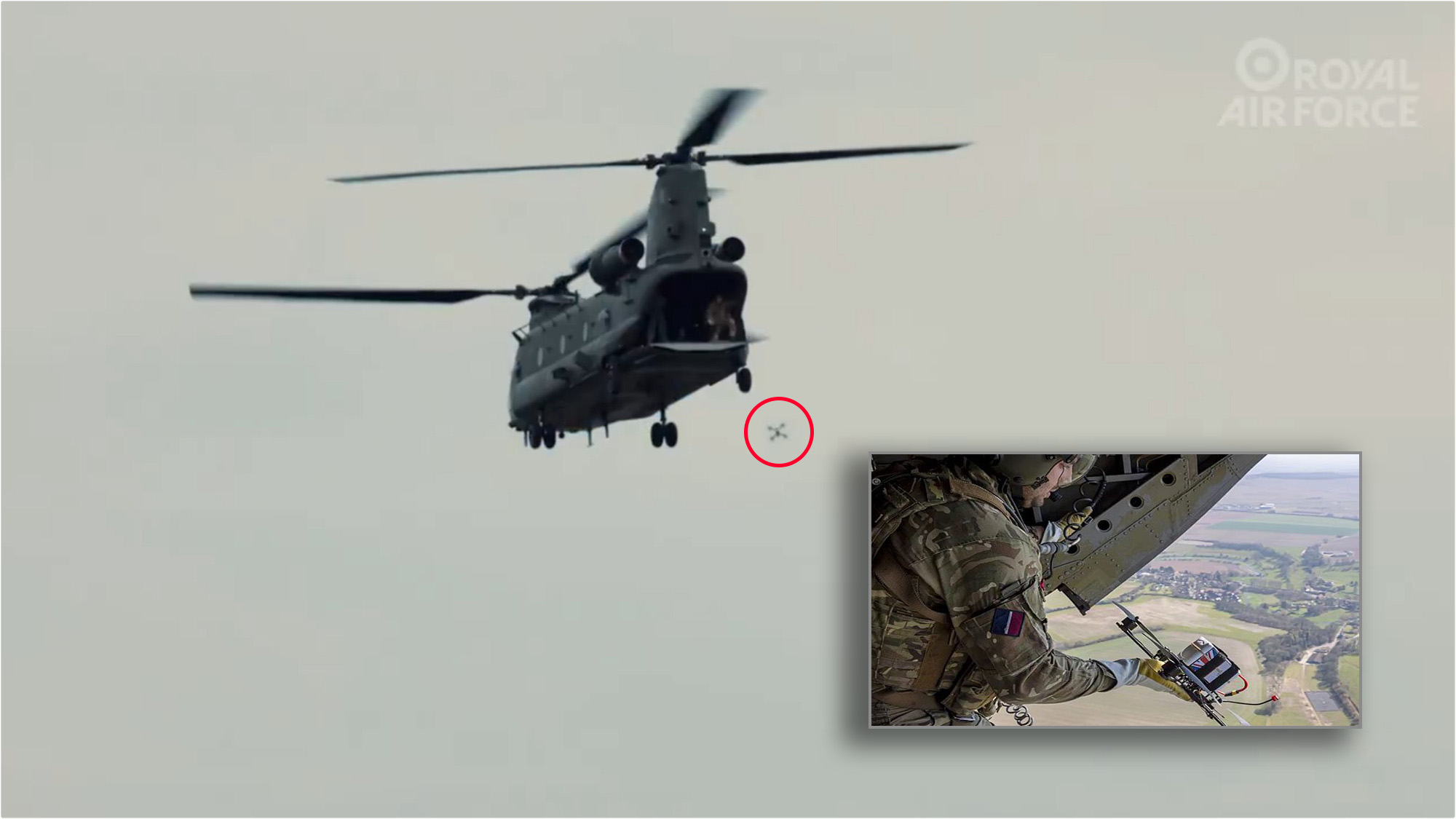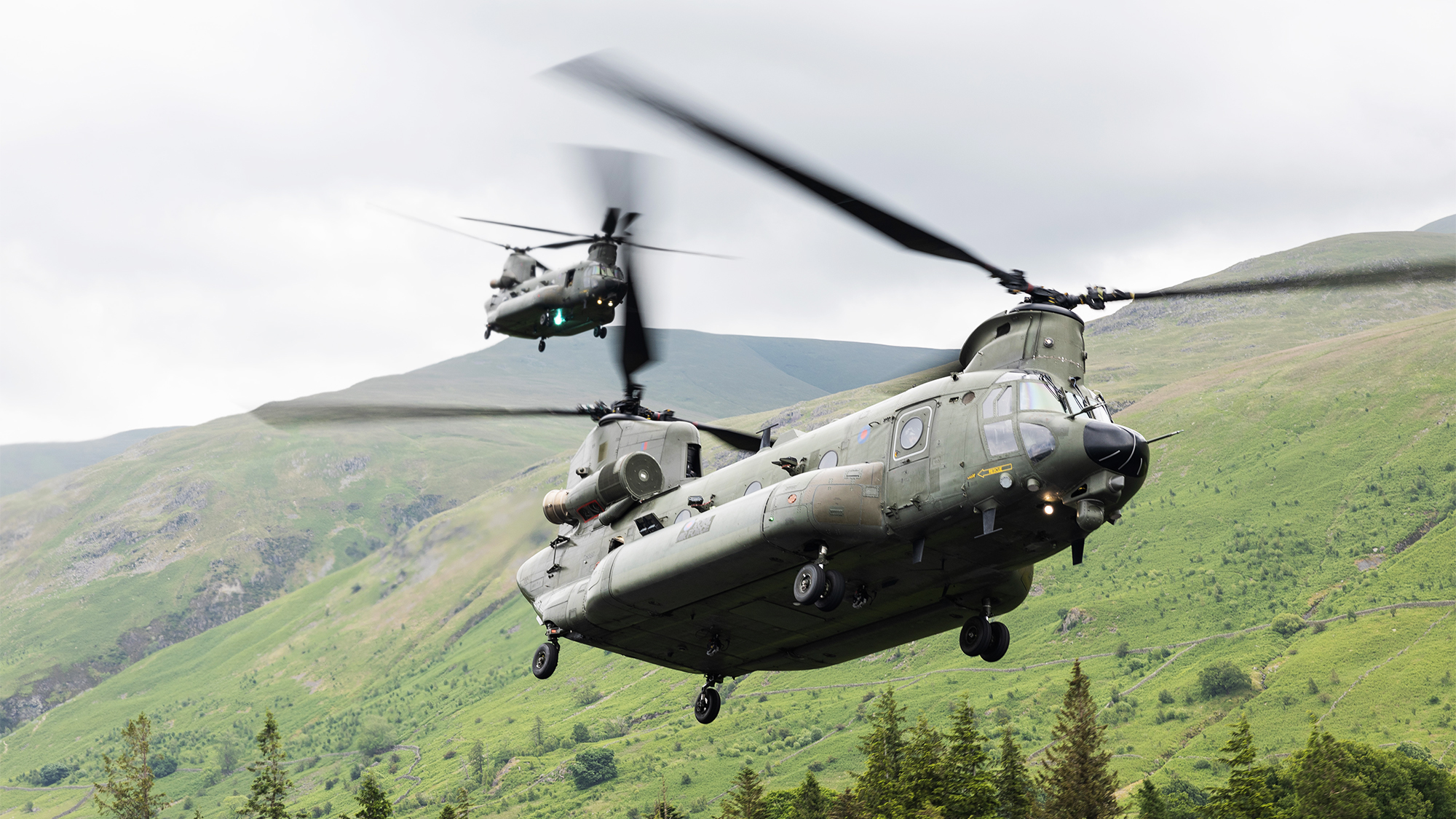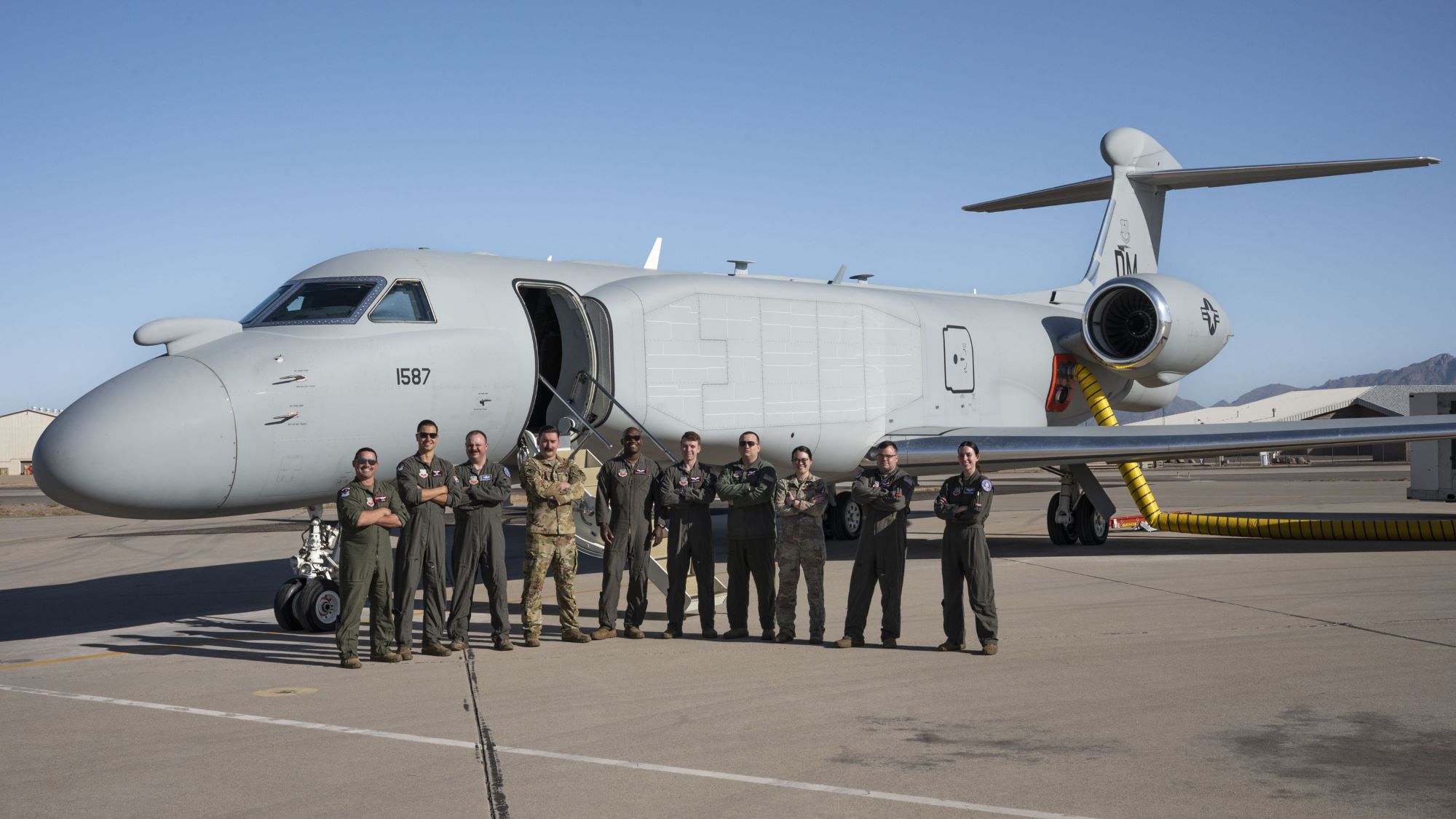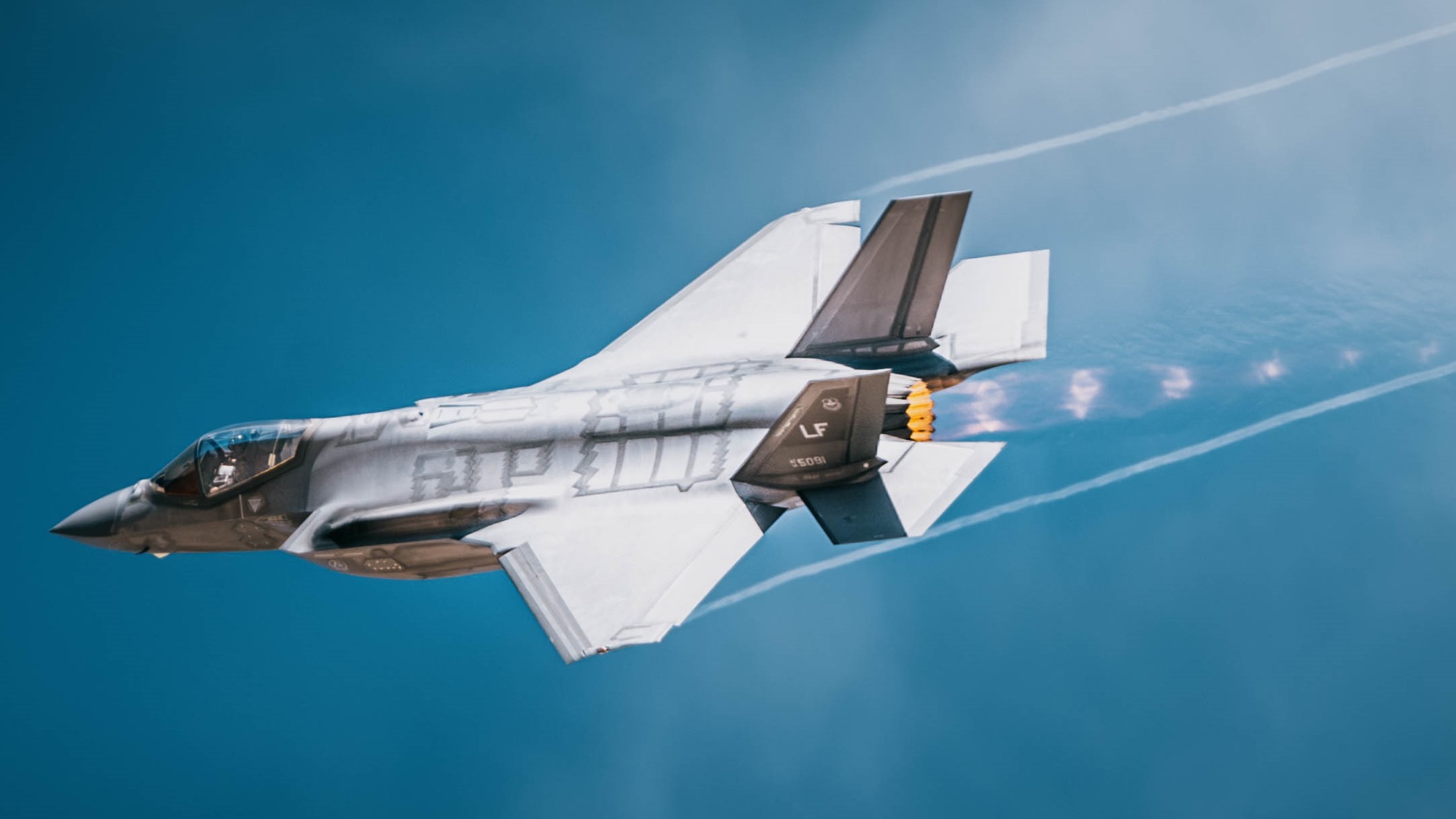Space Force testing space-based sensors to track airborne targets
Space-based capabilities could put current aerial tracking platforms in question, but top military brass have argued for options “from whatever domain or platform or system that comes [in].”


A Royal Australian Air Force E-7A Wedgetail airborne early warning and control aircraft is prepared for a sortie during Red Flag-Alaska 19-3 at Joint Base Elmendorf-Richardson, Alaska, Aug. 9, 2019. (US Air Force photo by 2nd Lt. Mark Goss)
WASHINGTON — The Space Force is collaborating with the Air Force and US Northern Command to demonstrate space-based sensors for tracking airborne targets, with an eye to seeing if that capability could work with Air Moving Target Indicator (AMTI) systems currently carried by crewed aircraft, a senior Space Force official said today.
“There are some demonstration activities going on. That is about as much as I’d say right now,” Lt. Gen. Shawn Bratton, service deputy for strategy, plans, programs and requirements, told the Mitchell Institute today.
“We’re waiting to kind of gather data and understand: ‘Hey, how good is this capability from space? How is it … compatible with the existing AMTI capabilities that the Navy and the Air Force fly?’ We think there are kinda synergies of having both flavors of this capability right now, but we’re really waiting for some … engineering data to understand what we can see from space, and how good is that going to be,” he said.
The idea would be that satellites equipped with their own AMTI would be able to send precise tracking data on airborne objects of interest to “shooters” on the ground, at sea and in the air. It would also be a new capability — joining the Space Force’s joint program with the National Reconnaissance Office (NRO) to develop Ground Moving Target Indicator (GMTI) satellites that track vehicles and ships.
The existence of prototype satellites on-orbit to test AMTI was first revealed by Air Force Gen. Gregory Guillot, NORTHCOM-NORAD commander, on Tuesday at a Senate Armed Forces strategic forces subcommittee hearing on missile defense activities. Guillot spoke in response to questions from subcommittee Chair Sen. Deb Fischer, R.-Neb., about what about what sensor systems would likely be used for President Donald Trump’s Golden Dome homeland missile shield concept.
“I don’t know what the Golden Dome will look like, but I suspect that it would be able to use a lot of the systems that are already in place and currently in development, which would give us a full capability in probably something closer to zero to five years, as opposed to something, you know, a decade out into the future,” he said. “A couple of those systems would be the HBTSS [Hypersonic and Ballistic Tracking Space Sensor] … for the hypersonics, space-based AMTI, which we have a number of prototype systems on orbit now, [and] over the horizon radars which are also operational not in the United States, but elsewhere.”
Neither Bratton or Guillot provided any details on the AMTI prototype birds, and spokespersons for NORTHCOM, the Space Force and the Air Force also refused to elaborate.
“There are a number of companies exploring AMTI technology of which we’re aware. We have not committed to any system, and companies are still conducting research,” the NORTHCOM spokesperson said. The spokesperson for Space System Command said that the command didn’t “have anything to add” to the statement by NORTHCOM. Likewise, an Air Force official referred inquiries to the Space Force.
Senior Space Force officials up to now have been coy about any development work on AMTI satellites, while stressing that the 2024 National Defense Authorization Act (NDAA) gives the Secretary of the Air Force the authority “for presenting space-based ground and airborne moving target indication systems to the combatant commands” for battlefield missions. That legislation charged the Air Force to set up a cross-service Moving Target Indication (MTI) Working Group.
For example, the Space Force’s second in command, Gen. Michael Guetlein, in September said that he estimates that space-based AMTI capabilities could “start coming online” sometime in the early 2030s — but suggested at the time that the service was only in the discussion phase about how to do that.
The Air Force currently uses its fleet of aging E-3 Sentry Airborne Warning and Control System aircraft for AMTI operations. The service in 2022 decided that Boeing’s E-7 Wedgetail aircraft would become the primary replacement for the E-3s, and last August finally reached a $2.6 billion deal with the company to acquire the first two E-7 of a planned 26 planes.
The Navy uses the E-2D Hawkeye equipped with AMTI sensors for airborne early warning (AEW), as well as for command and control. Hawkeye is built by prime contractor Northrop Grumman, as well as command and control operations.
“The Navy has fielded 62 E‑2D Advanced Hawkeye aircraft and is funded for a total of 80 aircraft by 2026 for a total program cost of $22 billion,” a September report by the Pentagon’s Office of the Inspector General said. “The Naval Air Systems Command contracted with the Northrop Grumman Corporation to perform software and hardware modifications in a series of phases between 2014 and 2027.”
However, the promise of satellites adequately tracking airborne targets has now reportedly left the Wedgetail’s future in doubt.
In a hearing held by the House Appropriations defense subcommittee last week, Air Force Chief of Staff Gen. David Allvin emphasized that the E-7, like its predecessor the E-3 Sentry, performs command-and-control alongside sensing. That capability, Allvin said, will need to be retained.
“The ability to sense, make sense and act, there are great opportunities as we look into space for more ubiquitous coverage and those sort of things that the airborne layer is becoming more challenged to do, because the adversary is pushing us further out,” he said. “However, we have to do more than just sense. We have to sense, make sense and act, and right now, E-7 is the platform that delivers what the E-3 can with greater capability.”
He later added, “I certainly believe we need the capabilities” to sense, make sense and act “from whatever domain or platform or system that comes [in].”
Chief of Space Operations Gen. Chance Saltzman chimed in, saying that “space offers a lot of advantages, particularly in the contested environment, but it isn’t necessarily optimized for the full spectrum of operations that your military is going to be asked to do. And so I think you’ll get unanimous consent by all the [service] chiefs when they say a mix of capabilities to make sure we can cover in full spectrum operations and truly offer the secretary of defense and the president a full range of operations is the ideal situation.”



















































































































































